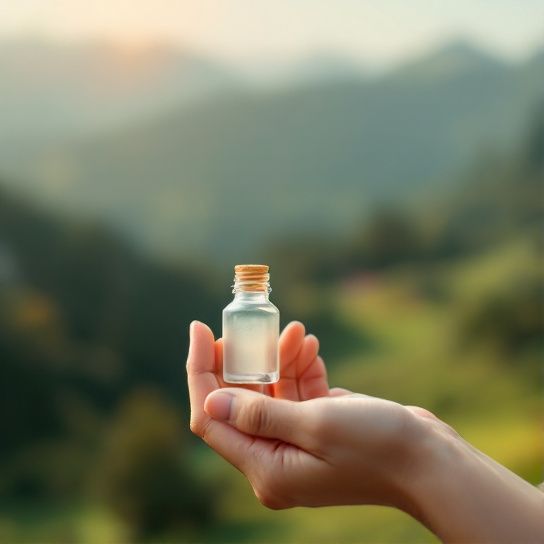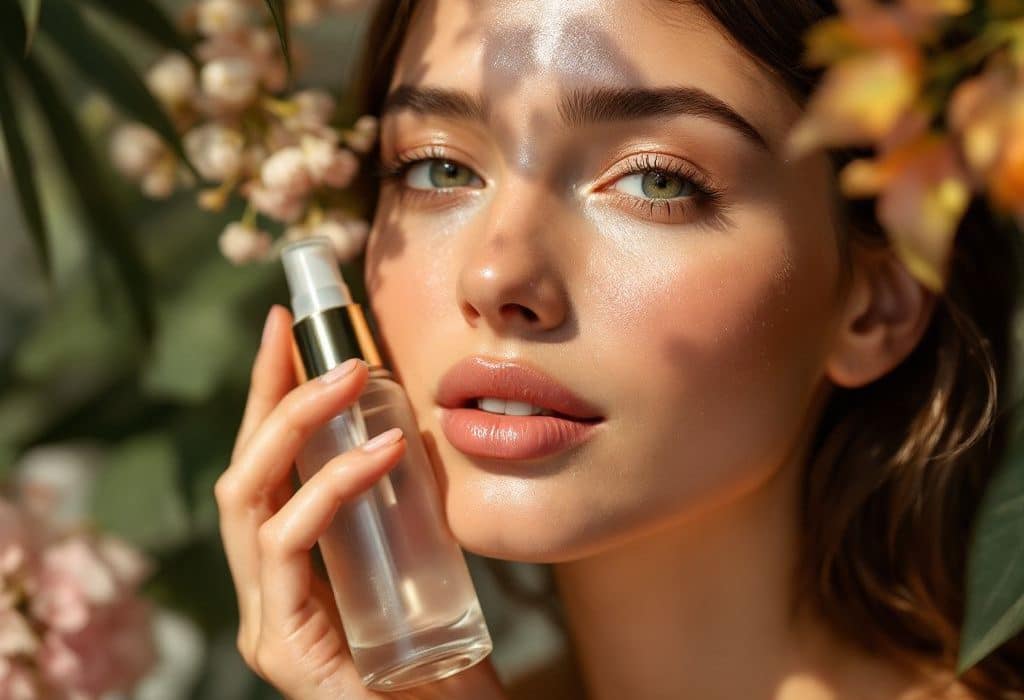Ever looked in the mirror at midday only to find your skin looking dull and tired? You’re not alone. Many of us face (pun intended) this gripe at some point during the day. But don’t fret—there’s an incredibly simple solution you might not have considered: face misting. Let’s cozy up and chat about how this not-so-secret weapon can breathe life into your skin, keeping it fresh and lively with minimal effort.
What Exactly is Face Misting?
First, let’s break down what face misting actually is. Imagine a delightful spritz of fine, hydrating mist gently enveloping your face. It’s like a mini-spa treatment, wherever you are. These face mists, often housed in little spray bottles, come packed with beneficial ingredients designed to hydrate, soothe, and rejuvenate your skin at a moment’s notice.
Face mists aren’t just scented water in a fancy bottle; their complexities can add depth to your routine—trust me, this ain’t no basic beauty product. When chosen wisely, these mists can act as a crucial component of your **natural skincare** arsenal, providing an on-the-go boost that complements your existing regimen.
The Secret to Consistent Hydration
Let’s face it (last pun, I promise!), our skin craves hydration like we crave that morning cup of coffee. Dehydration can lead to flaky and dull skin, but keeping a consistently hydrated visage helps maintain its youthful glow. Mists are a convenient CS—”convenience snack” for your skin—providing hydration that’s easily absorbed.
Why Hydration Matters
Hydration is pivotal for maintaining skin elasticity and avoiding that dreaded tired look. Dehydrated skin can feel tight and itchy, and it often exaggerates the appearance of fine lines—you know, those tiny traces we’d rather hide. A quick spritz revives and refreshes, ensuring your face is as alive and vibrant as your spirit.

Revitalizing your skin doesn’t entail a tedious slather of moisturizer—you have your trusty mist. It’s especially valuable if you find yourself in air-conditioned environments or under the sun—basically anywhere that saps your precious moisture.
Mist Magic: The Ingredients You’re Gonna Love
Most mists come with their own unique blend of magical ingredients. Let’s untangle some common ones so you can find what tickles your fancy.
- Aloe Vera: Nature’s soothing elixir, calming irritated skin while infusing hydration. If you’ve ever experienced sunburn, you’d know how wonderfully healing aloe can be.
- Rose Water: Ever-popular in natural skincare, it cools and refreshes, with a side of antibacterial benefits—what a dream, right?
- Green Tea: Packed with antioxidants, which fight free radicals like a set of good knights warding off cunning invaders.
- Vitamin C: Brightens skin, fading those pesky sunspots over time. It’s like sunshine captured in a bottle.
- Witch Hazel: Great for controlling oil and minimizing pores. If you’re battling blemishes, watch out for this ingredient in your mist.
Choose Wisely: Finding Your Perfect Match
Choosing the right mist for your skin is akin to a trusted companion who gets you—one mist doesn’t fit all. Look at each bottle’s ingredients and determine what aligns best with your unique needs. Give a few a try—often samples are available—to ensure your skin’s getting exactly what it needs with your newfound bestie in mist form.
How to Incorporate Face Misting into Your Routine

Alright, so you’ve got your trusted mist, now what?
Morning and Night
Start your day or end your night with a light spray before all other steps in your routine. It preps your skin, letting serums and moisturizers absorb more effectively. Think of it as setting the table—misting paves the way by delivering balanced hydration.
During Your Day
Let’s imagine you’re a few hours into your work staring at a screen—potentially not flattering to your skin. Here’s where we loop back to face misting: Why not keep a small bottle in your desk drawer or bag? When skin feels a bit meh, use a few sprays for an instant refresh. Remember, the world kicks off anew whenever you do!
Before and After Exercise
Yes! After a sweat session or before diving in, face mists can help maintain moisture balance. Think of it as a pre-workout snack but for your skin.
Lock in Your Makeup
Got makeup on? No problem—face mists can be a terrific setting spray. A quick spritz can help settle makeup, keeping it looking fresh rather than freshly painted.

A Safe Bet: Suitable for All Skin Types
Are you worried its just not “your type”? Fear not—face mists play well to varied skin concerns, as many formulations suit different needs from dryness to oil control. Dry skin benefits from repeated spritzes throughout the day, while oily skin welcomes milder formulations that don’t overdo the shine factor.
Just keep an eye on heavily fragranced products if your skin errs towards sensitive; smart selections can work without unwelcome interactions.
Common Mistakes: Steer Clear
A solid friend to walk with, indeed. Still, let’s avoid some missteps while navigating this path toward seamless beauty care.
- Overdoing the Spray: Less is more—you don’t need a monsoon. Generously misting till drenched cops you a one-way ticket to result-less and ingredient wastage city.
- Skipping Pat-Downs: Don’t spray it to look dewy—mist aims at instant hydration, but let’s coax that in by gently patting the face post-application. It helps the ingredients actually absorb, securing all those healthy vibes instilled onto your skin.
Wrapping Up Our “Misty” Conversation
So there ya have it. Give face misting a whirl in your natural skincare regimen—it’s uncomplicated, satisfies thirsty skin, and feels absolutely refreshing. It’s an accessible joy let loose in those deliberate squirts. Remember, skincare is a journey—face misting proudly stands out as part of this holistic exploration toward healthy skin radiance.
Go ahead and embrace misting—your skin will thank you for this sprightly dance of freshness and daily hydration you gracefully weave into the folds of everyday life. Trust me on this one—your skin will definitely glow with gratitude!
Frequently Asked Questions
What are the benefits of using natural skincare products?
Natural skincare products offer several benefits, including being gentler on the skin, reducing the risk of irritation and side effects, and providing nourishment through nutrient-rich and antioxidant-rich ingredients. They are also free from harsh chemicals, artificial colors, and fragrances, making them suitable for sensitive skin. Additionally, natural skincare products can help prevent premature aging and are more environmentally friendly[1][3][5).
How do natural skincare products differ from conventional skincare products?
Natural skincare products are primarily composed of ingredients derived from plants, animals, or minerals, with minimal or no chemical or synthetic substances. In contrast, conventional skincare products often contain harsh chemicals, preservatives, and synthetic ingredients that can strip the skin of its natural oils and cause irritation. Natural products adhere to stricter standards, such as the absence of pesticides and fertilizers, and are generally more aligned with the body’s natural mechanisms[1][3][5).
What natural ingredients are commonly used in natural skincare products?
Common natural ingredients used in skincare include coconut oil, olive oil, aloe vera, green tea, chamomile, argan oil, shea butter, and honey. These ingredients are rich in vitamins, antioxidants, and essential fatty acids that help moisturize, soothe, and protect the skin. They also have various specific benefits such as reducing oxidative stress, promoting skin regeneration, and combating signs of aging[1][3][5).
Are natural skincare products suitable for all skin types?
Yes, natural skincare products are suitable for all skin types, including sensitive skin. They are formulated to be gentle and non-irritating, making them an excellent choice for those who experience skin irritation from conventional products. Natural products come in a wide range of options, allowing you to find products tailored to your specific skin concerns, whether it be dry, oily, or combination skin[1][3][5).
References

